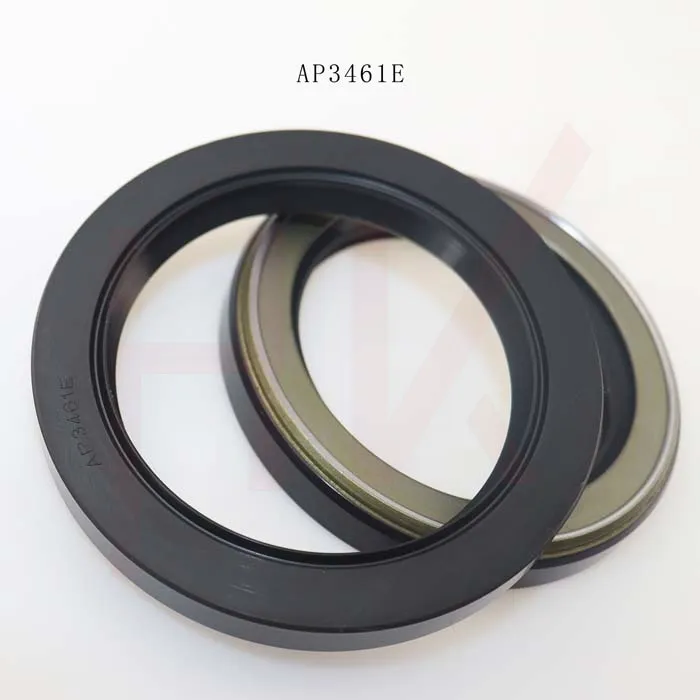gru . 16, 2024 05:13 Back to list
front hub seal
Understanding Front Hub Seal Essential Insights for Optimal Performance
The front hub seal is a critical component in the assembly of various vehicles, particularly in bicycles, motorcycles, and cars. Its primary function is to protect the hub from contaminants such as dirt, dust, water, and other debris that might compromise the performance of the wheel hub assembly. Understanding the importance of front hub seals is essential for vehicle maintenance enthusiasts and professionals alike.
What is a Front Hub Seal?
A front hub seal is typically made from rubber or synthetic materials designed to provide a tight barrier around the rotating components of the wheel hub. This seal is positioned between the hub and the axle, ensuring that the lubricants necessary for smooth operation are kept in place while preventing contaminants from entering the hub assembly.
The Importance of Front Hub Seals
The presence of a well-functioning front hub seal drastically affects the lifespan and performance of wheel bearings and the entire hub assembly. Without proper sealing, contaminants can infiltrate the hub, leading to wear and degradation of bearing surfaces. The ingress of moisture can also cause rust and corrosion, further damaging internal components. Therefore, maintaining the integrity of the front hub seal is paramount for ensuring efficient and safe vehicle operation.
Signs of a Failing Front Hub Seal
Identifying a faulty front hub seal is crucial for timely intervention. Some warning signs include
1. Increased Noise A failing hub seal can lead to excessive play in the bearings, resulting in rattling or grinding noises while the vehicle is in motion.
2. Grease Leakage If you notice grease leaking from the wheel hub area, it may indicate that the seal has failed, allowing lubricant to escape.
front hub seal

3. Overheating A lack of proper lubrication due to a compromised seal can cause the bearings to overheat, potentially leading to catastrophic failure.
4. Visual Inspection Cracks, tears, or signs of wear on the hub seal itself can indicate that it is no longer providing the necessary protection.
Maintenance Tips
To ensure the longevity of front hub seals, regular maintenance is essential. Here are some best practices
- Regular Inspections During routine vehicle maintenance checks, inspect the wheel hubs for signs of grease leakage or wear on the seals. Promptly address any issues found.
- Lubrication Checks Ensure that the bearings are adequately lubricated. Insufficient lubrication can cause increased friction and, ultimately, seal failure.
- Replace When Necessary If during inspections you find worn or damaged seals, it's vital to replace them immediately. Preventative measures can save considerable costs associated with more extensive repairs down the line.
Conclusion
The front hub seal may seem like a minor component in the vast assembly of a vehicle, but its role is undeniably crucial for the overall performance and safety of the vehicle. By understanding its function and recognizing the signs of failure, vehicle owners can take proactive steps to maintain their front hub seals effectively. Regular inspections and timely maintenance not only extend the life of the hub assembly but also enhance the safety and reliability of the vehicle, ensuring a smoother and more enjoyable ride. In the world of automotive maintenance, paying attention to the small details, such as front hub seals, can yield significant benefits for performance and longevity.
-
TCN Oil Seal Metal Ring Reinforcement for Heavy Machinery
NewsJul.25,2025
-
Rotary Lip Seal Spring-Loaded Design for High-Speed Applications
NewsJul.25,2025
-
Hydraulic Cylinder Seals Polyurethane Material for High-Impact Jobs
NewsJul.25,2025
-
High Pressure Oil Seal Polyurethane Coating Wear Resistance
NewsJul.25,2025
-
Dust Proof Seal Double Lip Design for Construction Equipment
NewsJul.25,2025
-
Hub Seal Polyurethane Wear Resistance in Agricultural Vehicles
NewsJul.25,2025
-
The Trans-formative Journey of Wheel Hub Oil Seals
NewsJun.06,2025
Products categories
















